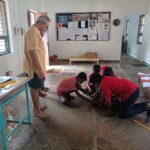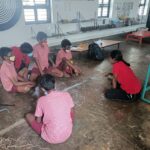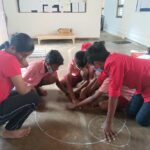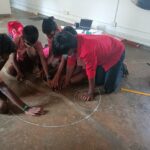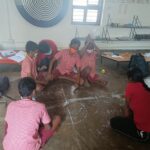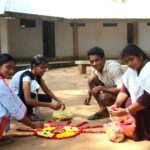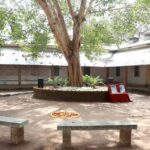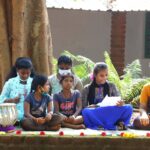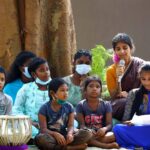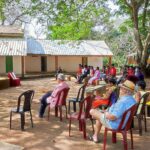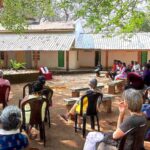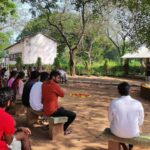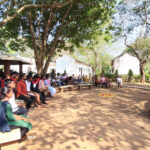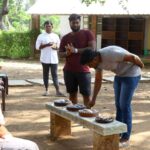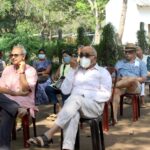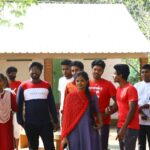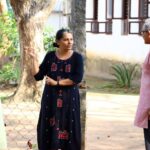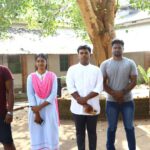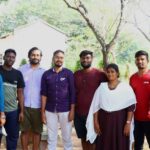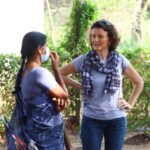Annual Review for 2021 Format
Looking back at the last year, where I am, what I/we accomplished, where can I/we do next.
Name:
Date of Joining C3SLD/STEM land:
There are 5 sections
- Integrity
- Learning/Growth
- Deliverables/Outputs/Outcomes
- Feedback for me
- Summary
Some of the questions just need a numbers/rating other require more details. Please fill carefully. Collaborate with others especially regarding learning section. Please look up Aura Auro website if it helps you recollect all that happened.
Integrity
Rate the statement above on a scale on 1 to 5 :
1 – rarely, 2 – occasionally, 3 – frequently, 4 – mostly, 5 – almost always
- Ground Rules:
1) Respect: I come when I am expected. I come on time at 7:00 a.m./8:00 a.m. I spend concentrated time when I am at work fully present and clarity times of unavailability with clarity on what needs to happen when I am not there.
2) Inclusion: I understand that I work with a multi-cultural environment and I speak only in English at work/lunch and other interactions with my peers and also use this opportunity to be a global citizen. I understand that for the children to be included in society they need to have good English and I am conscious about this and speak to them in English and then if necessary am bilingual.
3) Courage to Create alternatives: Tracking outputs/outcomes, recording narratives to create system/cultural shift and paradigm changes. I understand that no one will know what we do unless we take an effort to document it. I understand that people including those in the government have seen our website and benefited from it and presented it to the national committee at NEP. I maintain a blog a week either by myself or by collaborating with others.
4) Number of blogs last year: __/52
5) Please suggest an alternative third ground rule that would support narratives that change culture and system shifts if the number above is less than 2
- Integrity lens
Rate the statement above on a scale on 1 to 5 using the below:
1 – rarely, 2 – occasionally, 3 – frequently, 4 – mostly, 5 – almost always
1) I do what I say
2) I deliver on the plan and timelines I state
2 a) The requests I make are committed requests.
2 b) If I get requests that are not committed requests, I seek clarity and convert them to committed requests and understand the timelines for my projects
2 c) I sent my weekly updates are on time
2 d) My teachers notes are up-to-date
3) a) I use being on time as an opportunity to develop healthy living habits. I use the weekly updates as an opportunity to look at my accomplishments over the week.
3 b) I feel inspired by people I meet or interact with (e.g. volunteers, co-workers, people who visited us, people met at conferences, resource people, etc.)
3 c) Who did I meet that I was inspired by last year?
3 d) It has become a practice to look at alignment of my actions with my stand and with responsibility, equity and courage to create.
3 e) When I feel uncomfortable I question how I can grow from this experience
3 f) What is my purpose in life?
3 g) One incident that helped me feel close to this purpose in life
3 h) How do I see alignment in the purpose of my life with the purpose of C3SLD?
4) I speak up responsibly when I see something not done right. I bring up breakdowns at team meetings and help create breakthroughs.
4 a) How many breakdowns did I bring up and convert to breakthroughs
5) I am the change I wish to see. I am the shift I wish to see.
5 a) I take responsibility of my learning and make a plan of what I want to learn and put an effort to learn it
5 b) My suggestions on how research can become more integral to what we do and research topics for the upcoming year
6) I have the courage to create.
6 a) List of the initiatives I created or supported last year (e.g. SAC, effective online learning, teaching differently, Shifu program, taking up finances, accountability of sending out weekly updates, keeping the office organized)
6 b) What initiative can I/we create next year? Which of these would I like to lead or be a part of?
7) Summary: What did I learn about my integrity/wholeness being part of C3SLD/SL?
Learning/Growth
1) List the opportunities of learning I used last year (include conferences, workshops, in house workshops and trainings). Mark: Skills, Competency, Inner Capacity
2) List the opportunities I would have liked to use, but couldn’t due to competing commitments.
3) List learning opportunities I created for others or I supported for others learning.
4) Based on the above how many work days did I spend on self-growth and in growing others: (a full day workshop is 1 day, if it was a few hour workshop e.g. course on data structures – 1 and 1/2 hours 6 sessions = 9 hrs, count every 8 hrs as one day so this would be 1 day, 10 min mediation*6 days = 1 hr à 2 months = 1 day, 1 year=6 days, RTL stage 1 full workshop = 6 days).
5) Summary: What insights do I have about my learning and growth at C3SL/SL?
Deliverables/Outputs/Outcomes
1) What did I achieve (these are visible outside) last year? (e.g. projects delivered, classes taken, papers presented, workshops/talks given)
2 a) I noticed that I can be more effective or efficient.
2 b) What helps me be effective or efficient (e.g. have a conversation with others, ask someone to break down the task for me and put timelines, break down the task and put timelines, put aside uninterrupted time for a task, take a break and meditate for 10 minutes, take a walk, play sports, be with children)?
3) What did I accomplish last year? Things that are not externally visible, but I feel accomplished.
4) One incident with children/work that helped me feel accomplished.
5) What should we concentrate as an organization this year that supports me/us be more effective in what we deliver now?
- 6) What shift did I see in children/youth/co-workers/community due to my/our work this year?
7) What am I thankful for last year?
8) Summary: What did I learn about my effectiveness, efficiency with delivering outputs
Feedback for me
- What did you see me do that you would like me to do more or retain?
- What did you see me do that you would like me to reduce?
- What should I increase?
- How should I spend my time with you?
- Other suggestions on what I can do to make STEM land – AAD more effective.
Summary
Based on the above summaries. Please write a note about your last year for a report and ongoing research about ourselves that we can share with SAIIER.


